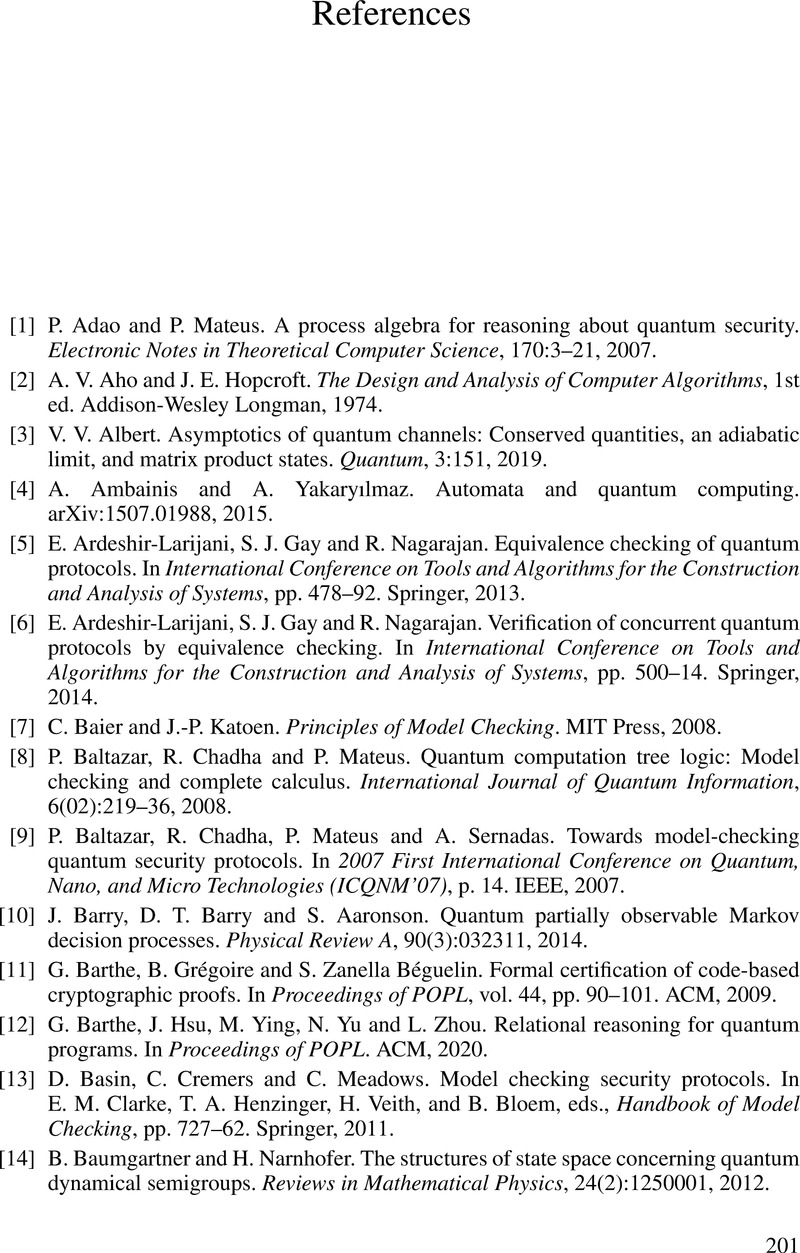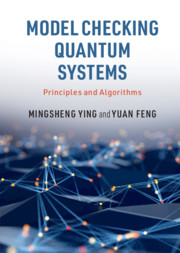Book contents
- Frontmatter
- Contents
- Preface
- Acknowledgements
- 1 Introduction
- 2 Basics of Model Checking
- 3 Basics of Quantum Theory
- 4 Model Checking Quantum Automata
- 5 Model Checking Quantum Markov Chains
- 6 Model Checking Super-Operator-Valued Markov Chains
- 7 Conclusions and Prospects
- Appendix 1 Proofs of Technical Lemmas in Chapter 4
- Appendix 2 Proofs of Technical Lemmas in Chapter 5
- Appendix 3 Proofs of Technical Lemmas in Chapter 6
- References
- Index
- References
References
Published online by Cambridge University Press: 14 January 2021
- Frontmatter
- Contents
- Preface
- Acknowledgements
- 1 Introduction
- 2 Basics of Model Checking
- 3 Basics of Quantum Theory
- 4 Model Checking Quantum Automata
- 5 Model Checking Quantum Markov Chains
- 6 Model Checking Super-Operator-Valued Markov Chains
- 7 Conclusions and Prospects
- Appendix 1 Proofs of Technical Lemmas in Chapter 4
- Appendix 2 Proofs of Technical Lemmas in Chapter 5
- Appendix 3 Proofs of Technical Lemmas in Chapter 6
- References
- Index
- References
Summary

- Type
- Chapter
- Information
- Model Checking Quantum SystemsPrinciples and Algorithms, pp. 201 - 207Publisher: Cambridge University PressPrint publication year: 2021



